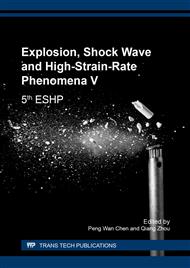p.72
p.78
p.84
p.90
p.96
p.102
p.111
p.117
p.123
Numerical Analysis of Behavior on Opposing Unsteady Supersonic Jets in a Flow Field with Shields
Abstract:
Collision dynamics of opposing unsteady supersonic jets injected in background gas with shock waves were calculated to simulate double pulsed laser ablation. Since the jets are deflected by collision and the motion of debris is ballistic. This characteristic can be used to reduce the number of debris when shields are mounted in front of substrate. The flow of jets through installed shields is complicated by the interaction between shields and jets, and between shields and shock waves. We investigate influence of shield position on the shock waves and the jets by numerical calculations. Axisymmetric two-dimensional compressible Euler equations were solved using the finite volume method by using ANSYS Fluent 14.0.0 code. The shields with slit was mounted parallel to the direction of initially injected jets. In order to investigate the influence of shield position on the shock waves and the jets, the shield position and background gas pressure were adopted as parameters. The jets and shock wave are deflected by collision and they can pass through the slit of shields. The passed shock wave reflects at the substrate mounted behind the slits and it forces back the jet to decrease the jet velocity. The shield position governs the velocity and amount of the jet that reach the substrate.
Info:
Periodical:
Pages:
96-101
Citation:
Online since:
January 2018
Authors:
Price:
Сopyright:
© 2018 Trans Tech Publications Ltd. All Rights Reserved
Share:
Citation:


